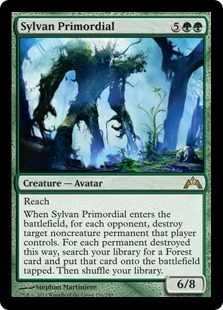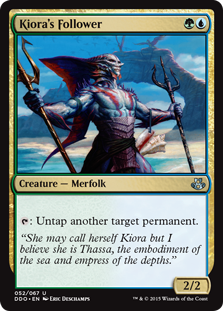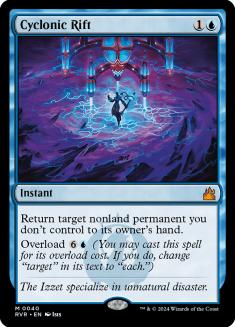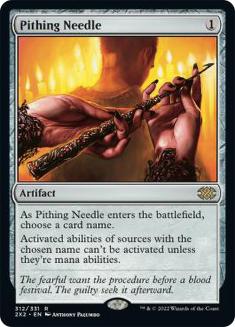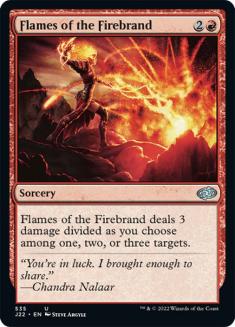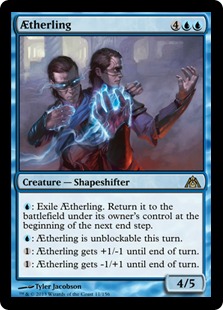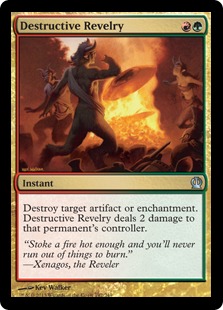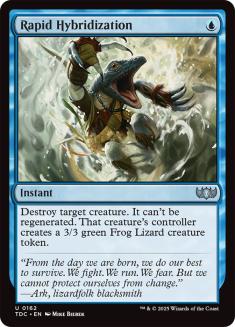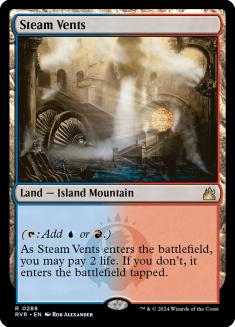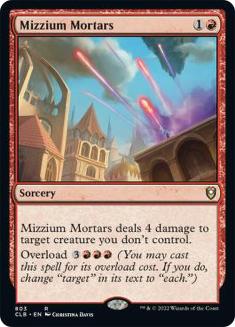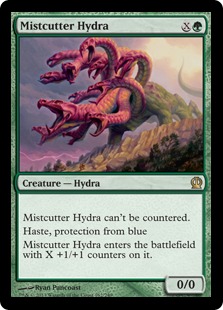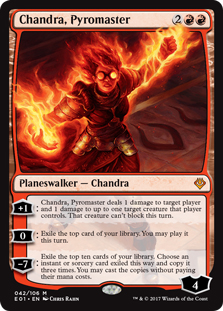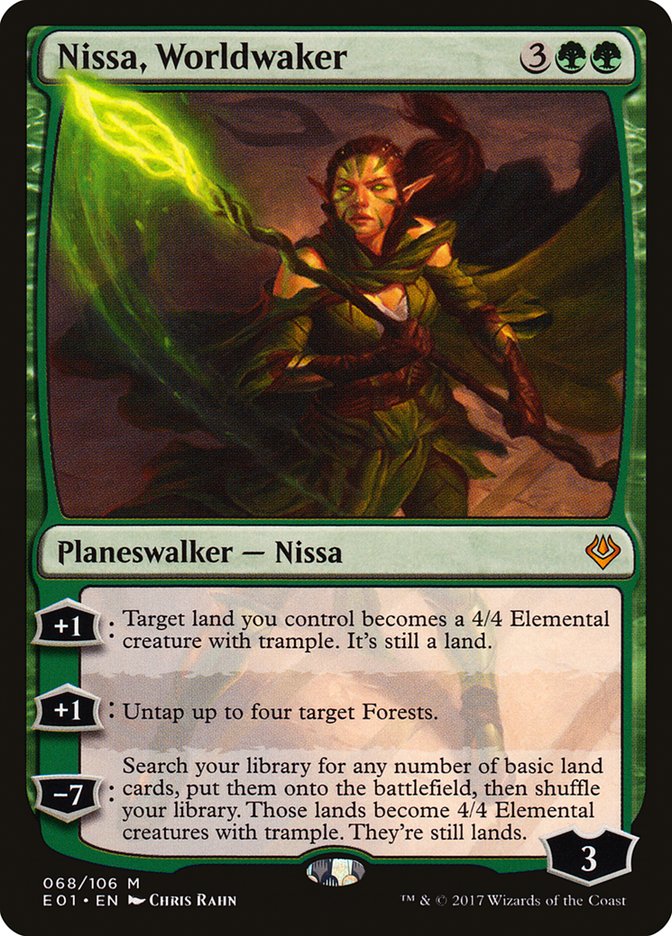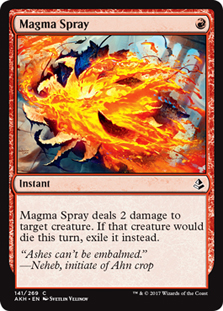It’s that time again!
The current Standard season is coming to an end, and players are looking forward to what the new rotation will bring. Many cards that we know and love are
rotating out of Standard which means some will be heading to your shoebox of unplayables. Sure, Sphinx’s Revelation will make an appearance here and there
in Modern and so will Pack Rat, but many others will become bulk rares.
As the season is coming to an end, many players are in either the position of having a Standard deck they know and love that they have been playing from
the start, or they have been bouncing from deck to deck. Either way, there are still are a few weeks and some very important tournaments coming up, like
the Open Series in Washington DC and the Season Three Invitational in New Jersey. If you’re on the side of bouncing from deck to deck and are tired of the
net decks then, I think I have the deck for you.
Now, I’m not a very good salesman, but I think I could sell you on this deck because it is super powerful, unexpected, and a ton of fun to play.
If you guessed Esper, you’re WRONG!
Because it’s actually RUG Walkers. Yes! RUG Walkers! Now I know everyone is on the Jund Walkers plan, but we don’t want to be like everyone else. We want
to be like Jace, Xenagos, Kiora, Chandra, and Nissa. But before I go any further on trying to sell you on this deck let’s take a look under the deck box
and see what we are working with:
Creatures (13)
Planeswalkers (11)
- 3 Jace, Architect of Thought
- 1 Chandra, Pyromaster
- 3 Xenagos, the Reveler
- 2 Kiora, the Crashing Wave
- 2 Nissa, Worldwaker
Lands (26)
Spells (10)

This deck definitely brings something new to the table, which is very important late in the season since everyone has so much experience playing against
all the known decks that have been around for quite some time now. Not only does this deck bring a surprise, the deck actually attacks the metagame nicely
as you are set up very well against many of the popular decks. Your planeswalker strategy is super powerful against any midrange or control shell type of
deck, while your mana ramp and cheap removal helps against the faster decks in the format.
Mana Acceleration
:
Six creatures help ramp you to the many powerful four-drop planeswalkers we have in our deck. Between Jace, Chandra, Xenagos, and Kiora, hitting one of
these on turn 3 happens very often and puts a great deal of pressure on your opponent. Originally, I had seven mana accelerants, but with the ten Temples
in your deck, you have a slightly better chance to find your accelerant on turn 2, so I felt six would be enough. Besides, drawing too many mana rampers
could be bad as they tend to thin out the number of threats you have while flooding you out.
Sylvan Caryatid is a staple in decks such as this, but Kiora’s Follower is something that doesn’t get very much play. Normally Elvish Mystic would take up
that spot, but in a list like this where you don’t really care about ramping from one to three, being able to play a temple on the first turn gives you a
better chance of finding your mana accelerant when you need it.
Although Courser of Kruphix doesn’t provide mana acceleration, it provides a steady stream of card advantage and allows you to constantly hit your land
drops. Ignoring the card advantage Courser brings to the table, it happens to be one of your best weapons against any aggressive deck since it is both an
early blocker and life enabler. The one thing I noticed though, is that Courser usually won’t be enough against Rabble Red by itself, and in that matchup
you are instead heavily relying on drawing your sideboard cards (Magma Spray and Flames of the Firebrand).
Planeswalkers
:
Each planeswalker not only serves a unique role in the deck but multiple ones as well. Jace and Chandra provide a card-drawing engine while Xenagos
provides a steady stream of creatures and an additional form of mana acceleration. This holds similar for Nissa, as you are able to make sure you have
enough mana to overload a timely Cyclonic Rift or turn your lands into 4/4 creatures.
Lastly, Kiora does a little bit of everything. With Kiora, you’re able to use the “explore” ability for ramping, but you’re also able to defend your other
planeswalkers while building up to an ultimate. One of the biggest problems for the deck is Desecration Demon since it dodges your early burn spells of
Izzet Charm and Mizzium Mortars. However, Kiora combined with Turn/Burn and Rapid Hybridization gives you answers to those big problematic creatures. If
someone were to ask which is the best planeswalker for the deck, I wouldn’t really have an answer because they all truly work as a team and each are better
against particular strategies.
Since most of your threats are planeswalkers, you’re at a huge advantage in many matches since a good amount of creature removal spells will be virtually
useless. The reason I say most of your threats are planeswalkers and not all is because Keranos, God of Storms and Sylvan Primordial are both extremely
powerful threats that should get credit as well. Keranos is nearly unstoppable once it gets going, while Sylvan Primordial is one of the biggest creatures
in Standard with possibly the best enters the battlefield abilities considering Standard is somewhat defined by planeswalkers at the moment anyway. Being
able to destroy a planeswalker while leaving behind a 6/8 creature is just awesome, with a bonus of hitting Detention Spheres or lands.
Sylvan Primordial is the finisher of choice for game 1 but will get sided out in any matchup where you might be expecting Lifebane Zombie. Even though you
have other green creatures that can be hit from Lifebane Zombie, you still want to cut the Primordials because the other creatures can come out before
Lifebane Zombie does. Regardless of whether or not you keep Sylvan Primordial in, you will still have more than enough win conditions to close out a game.
The remaining cards in the list that I haven’t touched much upon yet are the various removal and control spells of the deck:
Removal/Control:
What I tried to do with the spells in this deck is to have them be useful both early in the game and later on when you have more mana. Mizzium Mortars and
Cyclonic Rift are the most obvious ones here as they both can be played later on for a more powerful effect with their overload cost.
Since Pack Rat is such a huge part of Standard and will be for the next few weeks, I wanted to make sure I had enough answers to it. First off, many games
I have played with this deck showed that in about half of them that Pack Rat was somewhat useless against my draws. When you’re on the play, dropping a
turn 3 Xenagos or Jace really nullifies Pack Rat and gives you more than enough time to set up an overloaded Mizzium Mortars or Cyclonic Rift. In the other
games, when facing down a Pack Rat, if you don’t have an early mana accelerant, you can try to rely on one of your several early removal spells to shut
down the Rat before it gets going. Izzet charm is one of those but also can be used to counter a timely Hero’s Downfall or Sphinx’s Revelation.
As far as the one Rapid Hybridization goes, it’s basically a catch all removal spell, and since you dig so much through your deck with Jace, Chandra,
Kiora, Courser, and the Temples, playing one-ofs or two-ofs makes more sense since you have a higher chance of finding what you need while pushing away the
cards you don’t.
The mana of the deck has been very solid for me, though I do wish I could play Mutavault. However, because the deck is so color intensive, I think it is
much safer to not run any colorless lands. As far as the Temples go, I decided that ten would be the right number. Originally I had all twelve, but having
too many enters-the-battlefield-tapped lands really tends to mess up your curve, and your gameplan becomes much less smooth. In Esper, for example, I play
all twelve Temples because you don’t really care about being on curve, but in this deck you certainly do.
Now let’s look at a rough sideboarding guide against many of the popular decks.
VS Mono-Black Devotion
:
Out:
In:
The Flames of the Firebrand were something I was unsure of, but after playing with them more and more, I became impressed with them. Flames of the
Firebrand can either take out a Nightveil Specter, or sometimes get extra value by taking out two Pack Rats or a Pack Rat and Lifebane Zombie. Worse comes
to worst, Flames can go to the dome and deal the last points of damage to your opponent or finish off a ticked down Liliana Vess.
The Pithing Needle is pretty versatile and normally will name Pack Rat or whichever land Underworld Connections is enchanting to shut off their card draw
engine (the same reason you bring in Destructive Revelry). Sometimes it will name Mutavault, but normally Mutavault isn’t much of a problem against you.
Finally, Aetherling comes in since it’s such a hard to answer threat while dodging Lifebane Zombie.
VS U/W Control
:
Out:
In:
Here, the sideboarding is a bit more straightforward: take out your mostly dead removal spells and bring in cheap counters and Mistcutter Hydras. However,
some of the U/W Control decks will bring in either Nightveil Specter or Archangel of Thune, in which case you might want to leave some of your removal
spells in to hedge. The reason you are trimming some of your mana sources is because the game will most likely go a bit longer, allowing you more time to
hit your land drops without flooding out.
VS Mono-Blue Devotion
:
Out:
In:
Here, you’re looking to cut some of the slow, clunky stuff for cheaper removal spells and Mistcutter Hydras. This matchup is overall pretty even, but
sometimes Master of Waves can be a problem, so remember you can always Turn the Master and make it into an 0/1 with no abilities which kills all of its
elemental tokens. The goal is to not fall too far behind, and use your Jace wisely as it is one of the best weapons you have in slowing them down.
VS Jund Walkers
:
Out:
In:
Again, just like the Mono-Blue Devotion matchup, this one is very close, and tight play will be required as you will be faced with many difficult
decisions. The Negates will help you out, but they have cheap spot removal for your planeswalkers in Dreadbore and Hero’s Downfall. In addition to those
powerful removal spells, they also have access to hand disruption in Thoughtseize and Rakdos’s Return. Trying to get the most value out of your
planeswalkers will be key; try to plan accordingly.
VS Rabble Red and R/W Burn
:
Out:
In:
The main difference here is against R/W Burn, you want to also bring in the Negates, but against Rabble Red, you leave them on the bench. However, the
overall gameplan against both decks is to make your deck as cheap as possible so you are able to keep up with their fast-paced gameplan.
So there you have it! A deck that is unique, fun, exciting, and very powerful. I would love to see this deck make an impact on Standard, and if it doesn’t
before the rotation, I think it definitely will afterwards, so make sure you have your playset of Xenagos and Kiora before they spike up in price.
Speaking of price spikes when is my buddy Ashiok going to hit $30!!!!!??????!!!!!!!!
All kidding aside, I’d love to hear your thoughts on the deck and if you plan on playing it at Open Series in DC, the Season Three Invitational in New
Jersey, or any of the WMCQs. Let me know and share your ideas when you can!

